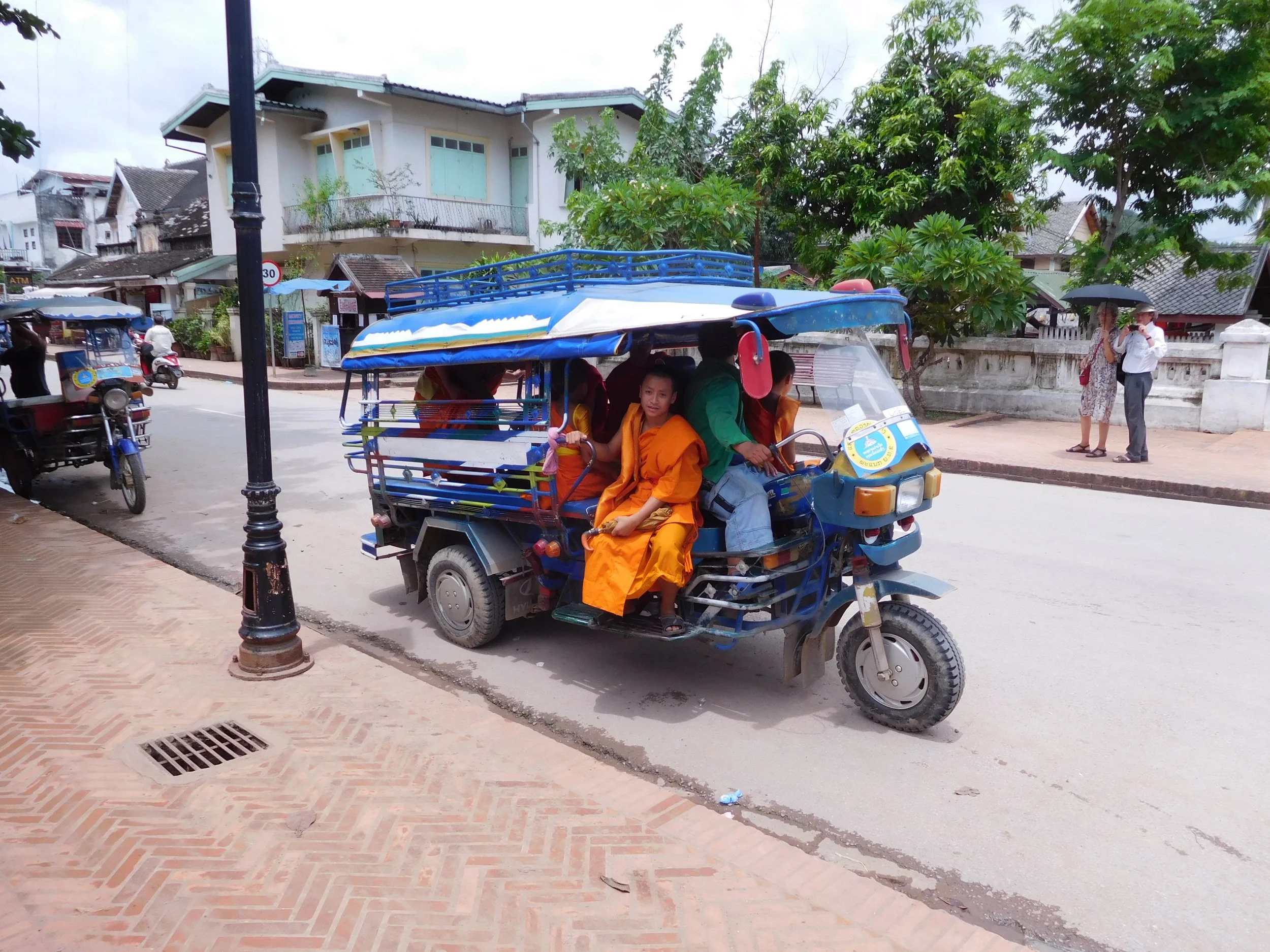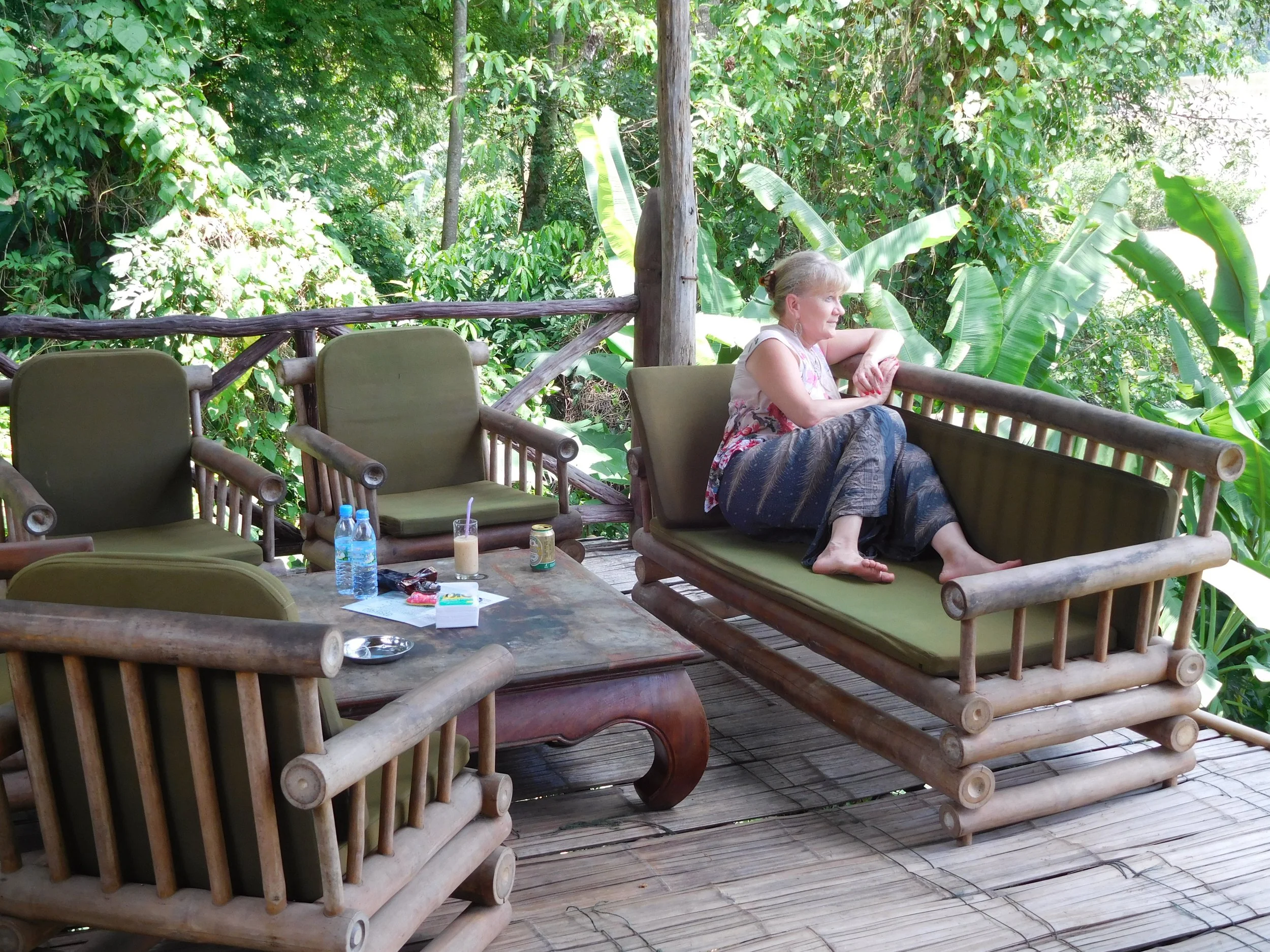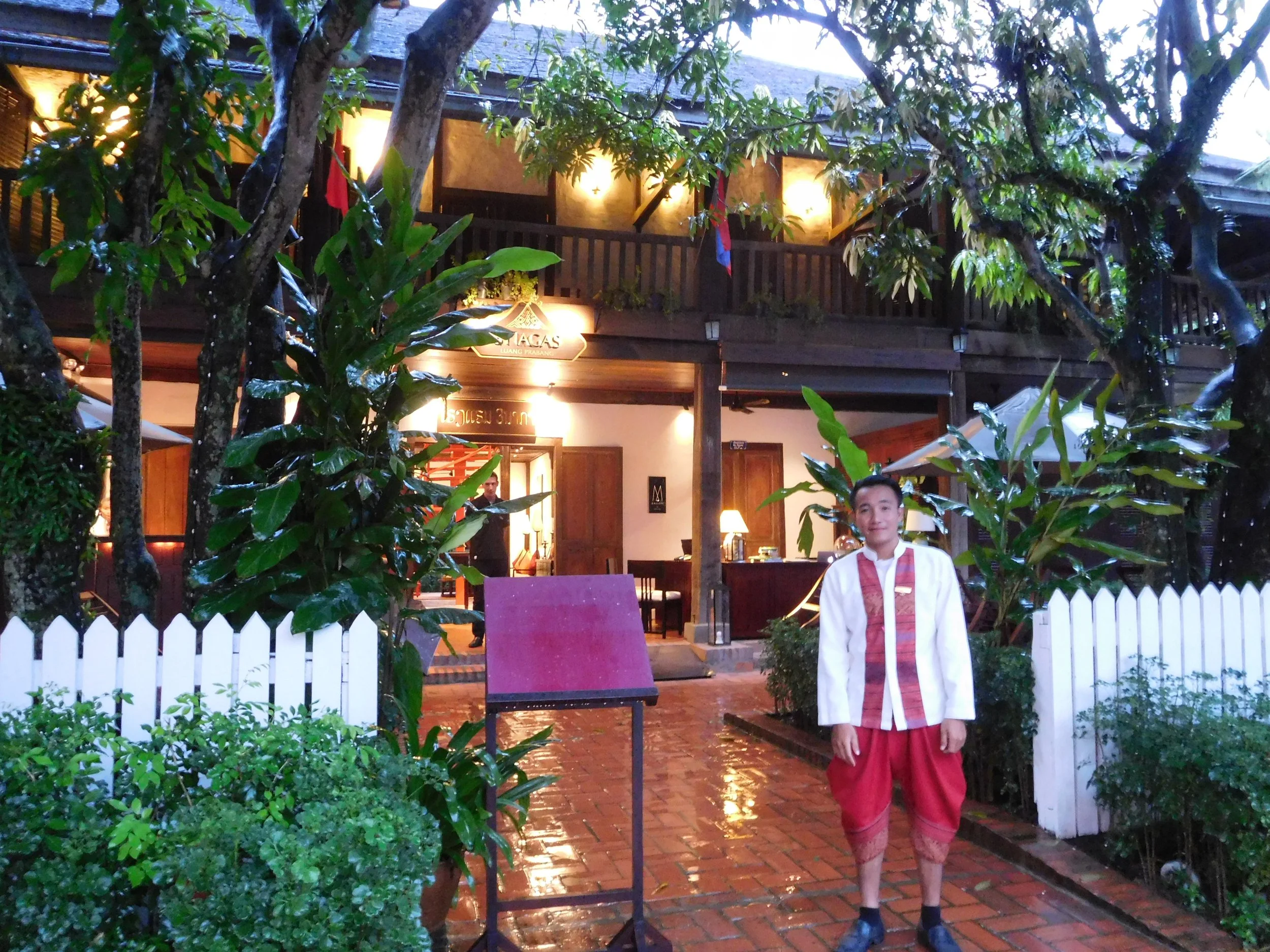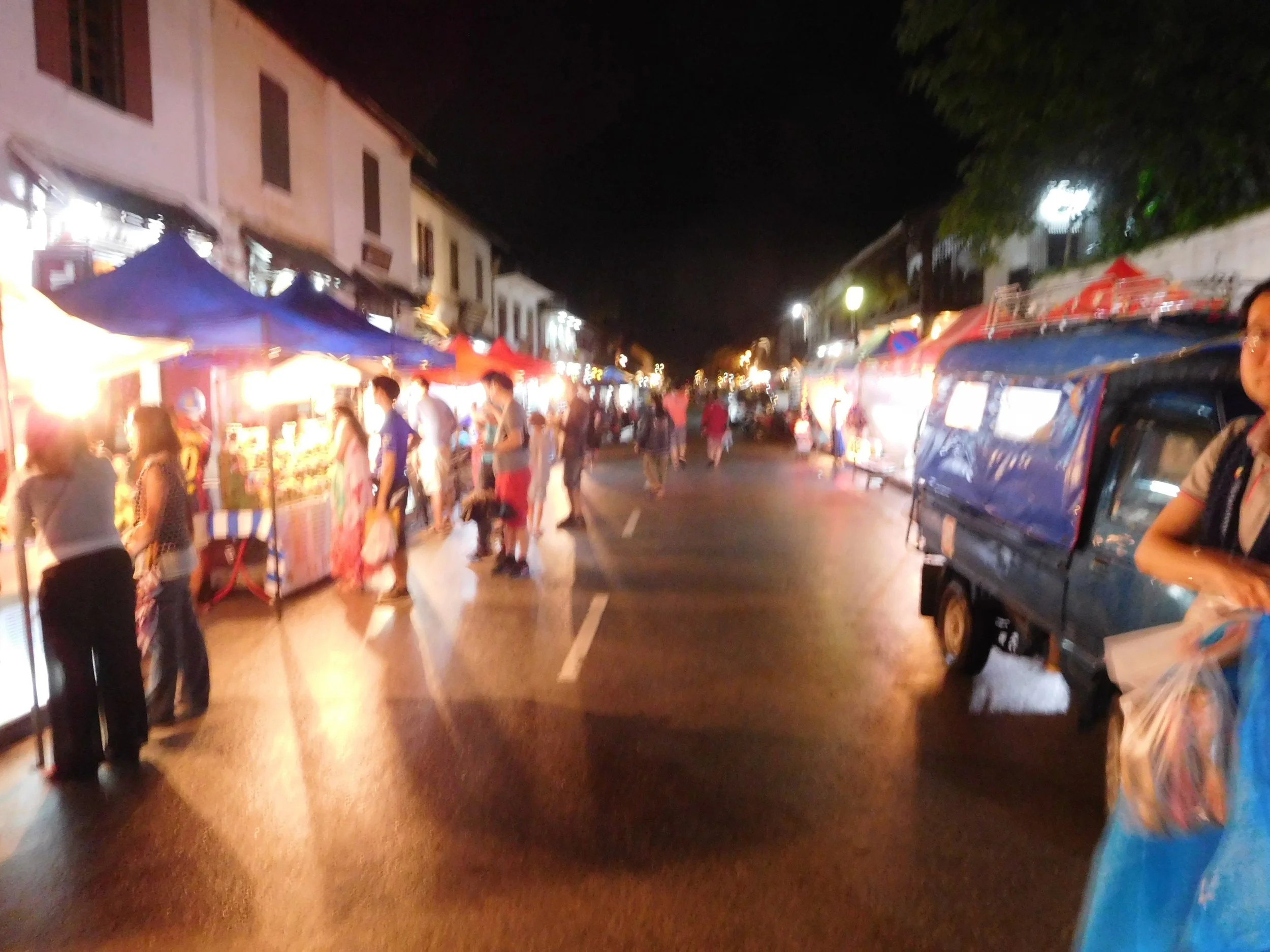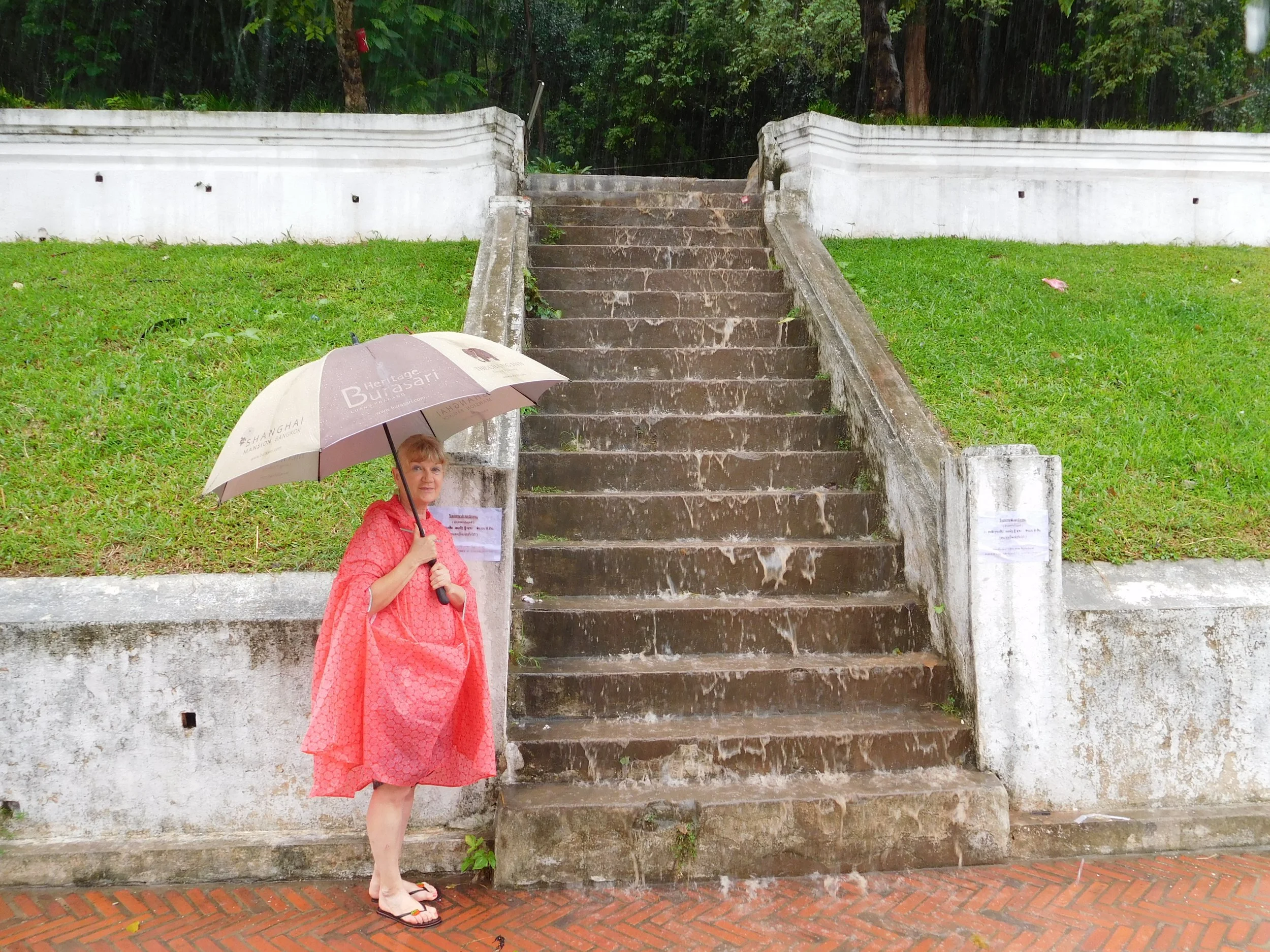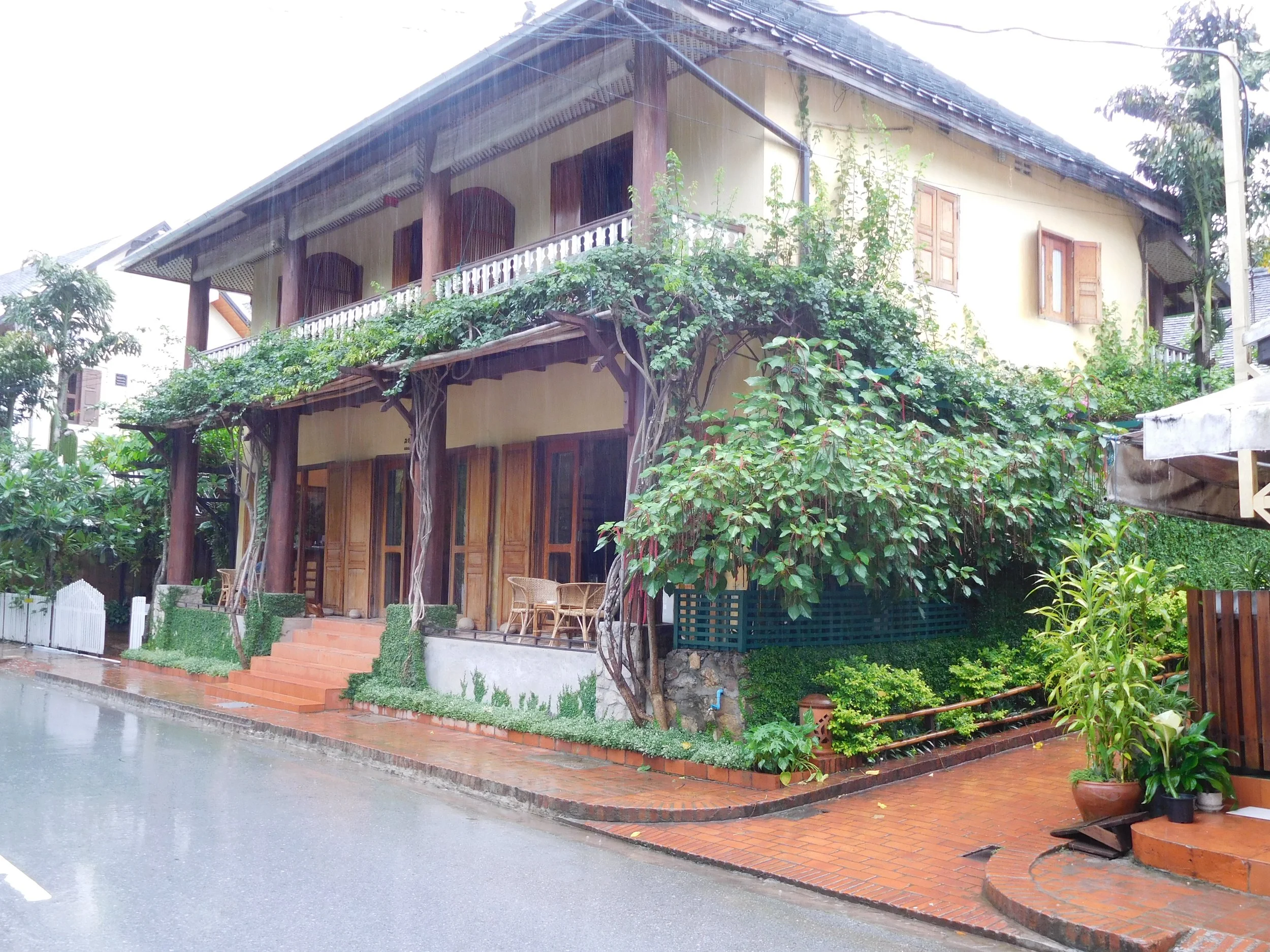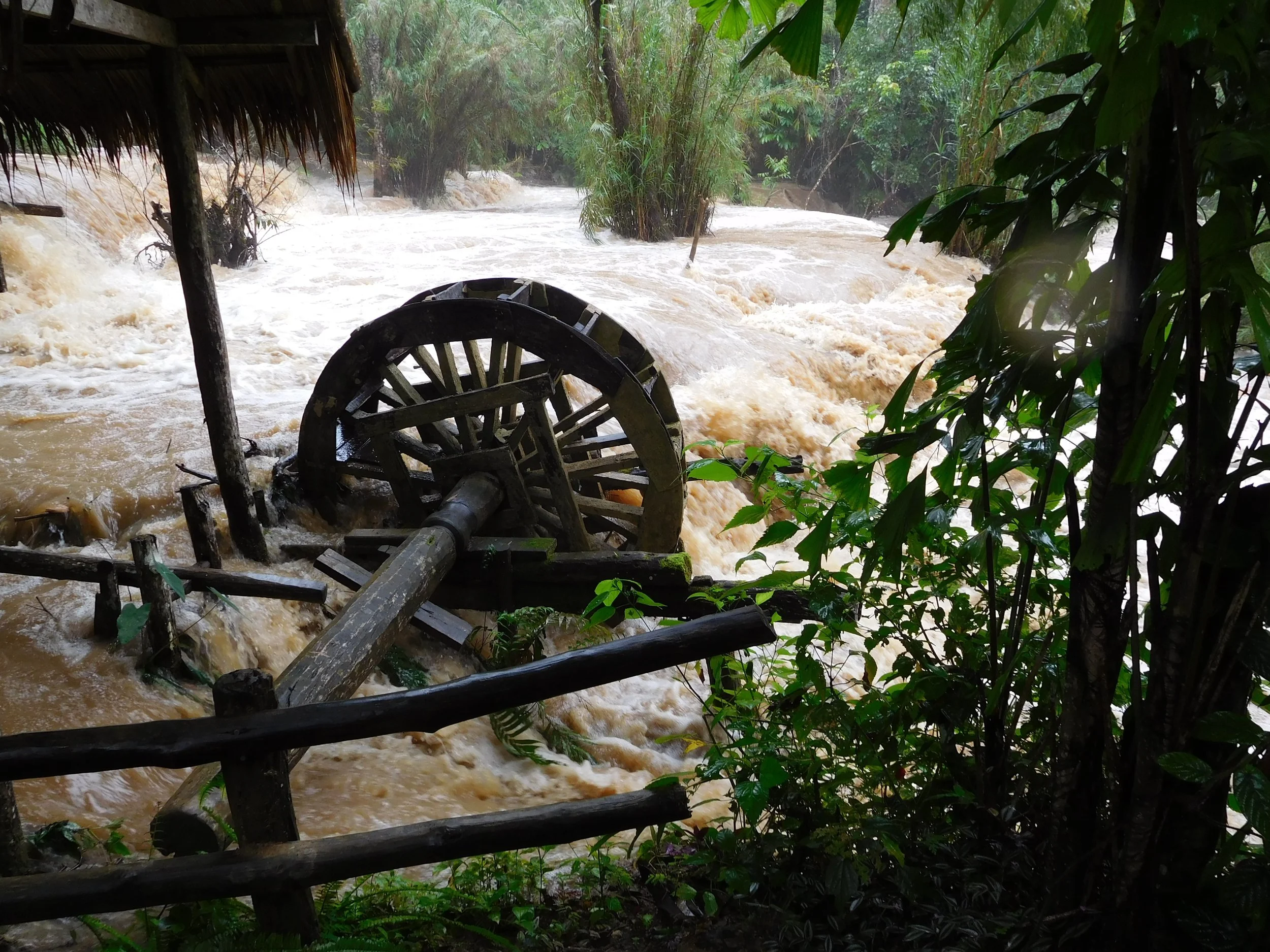In Love with Laos
Luang Prabang
Luang Prabang is an all-time favourite location no matter whether it’s crowded in the sunny dry season or almost empty of tourists in the monsoonal wet. The images below highlight the difference. Weather and tourist numbers aside, little has changed over the years. The city is filled with extraordinarily beautiful wats (temples), and one regularly hears chants, drumming and the reverberation of gongs and bells floating through the air. I’ve rarely turned a corner without catching glimpses of monks in saffron robes, crossing the street, attending their shrines or riding a tuk-tuk on their way to whatever temple requires their presence.
Images: the Mekong River, wats, shrines, monks, tuk-tuks and rain.
The streets are narrow and tidy, and a sense of aesthetics is evident everywhere – in flowerpots, gardens, building design, signage and in the ambience that restaurants have created that spills out onto the streets to lure passersby inside to dine. The food was delicious no matter where I ate; the choice of restaurants is extensive. They line the main street and the road along the river where the views are breathtaking. My favourite hang-out in Luang Prabang is Utopia, a restaurant and bar that overlooks a wide tributary of the Mekong called Nam Khan. It’s built from timber giving it the rustic ambience so common here. The entrance foyer was filled with an eclectic assortment of items, artwork and functional, vintage collectors’ items. The large terrace offers inviting couches and padded mats on which to recline, read a book, chat with friends, drink coffee, smoothies or spirits and nibble on the restaurant’s delectable selection of dishes.
In the evening, the main street transforms into an extensive night market that enjoys the drier months, and simply ignores the wet when it rains. During the day, one sees that many stores focus on healthy food choices, while bookstores offer New Age wares and literature on self-development and spirituality. Massage venues are beautifully decorated to offer an uplifting experience along with their aroma massages. Lovely jewellery stores offering beautifully designed silver at affordable prices caught my eye. At the main intersection, hawker stalls offer a wide selection of food – breakfast for locals and visitors on tighter budgets. Dressed in colourful ponchos, sightseers who’ve decided to brave the wet season, still take their walking tours. They’re not scared off by the rain. Unlike some other places in Asia, the temples in Luang Prabang are remarkably active and one sees them daily filled with monks in training; engaged in meditation, chanting or prayer. Visitors, especially Buddhists, are welcome to join at the back of the hall, while others stand in awe at the entrance to observe.
The choice of accommodation is vast (see the attractive online images on booking sites) and ranges from backpacker dorms to five-star gorgeous suites where you’re treated like royalty. I once arrived without a booking, meandered down a street and chose a no-frills room in a guesthouse that was perfectly adequate and per night cost the equivalent of cups of coffee back home. More recently, I booked a more pricey (yet still affordable) luxurious hotel suite with pool, garden, exquisite traditional furnishings and a private terrace with reclining lounges overlooking the Mekong. There are several of these exotic hotels along the river between 1 & 3 kilometers from the town centre. Delicious breakfasts were served on the terrace each morning before I’d make my way into town on one of the hotel’s bikes. Many hotels provide bicycles – to my mind, the best way to explore this magic place. My hotel was down an unsurfaced road through a village setting, a ten-minute bike ride from the town centre. In Laos, it can take quite a while to get through such a village especially after your third day as everyone remembers your face: every small child wants to touch you and talk; their mothers greet you with big smiles, and by day four you’ve become so familiar that grandmothers stop their chores to offer you fruit or what ever they have on hand. I’ve not experienced another place quite like it anywhere in the world.
Images: my hotel overlooking the Mekong, exotic beds with mosquito netting, the terrace, foyer and pool, other hotels and guest houses.
A day trip by minibus to Mount Phousi is a favourite for many visitors and the drive through a lush countryside to the Kuangsi Waterfalls is the best outing of all, an absolute ‘must’. At the entrance to the falls is a market selling clothes and souvenirs as well as food vendors cooking meat, fish and vegetables over charcoal. Farther on is a sanctuary and rehabilitation centre for bears. At the time there were four small to medium-sized bears, a black species with a white V on their chest called Ursus Thibetanus. They all appeared well-fed and healthy.
After a brief chat with the bears, I walked through a lush forest to where the canopy cleared. On my last visit, I was stunned by the beauty of the waterfall and the spectacular, turquoise semi-circular pools in which people were cooling down, finding relief from summer’s heat. There were several levels to climb, each with their own gorgeous water features, but this time only the first level was accessible. I was awestruck by the thundering force of the water coming down the mountain after an unusually heavy Monsoonal downpour. The difference was unbelievable, and one could easily have been washed away. Yes, the turquoise pools are beautiful most of the year, but I’ll never forget experiencing the power of nature and hearing that water roar.
You may be asking which you’d prefer; Luang Prabang in the dry or in the rainy season. Both are spectacular, but for me, August is my favourite month with its absence of crowds, the morning fog, the sound of chanting monks filtering through the drizzle, the squish of bicycle tyres on wet roads and then the sudden spectacular contrast, most afternoons, when sunshine bursts through the clouds. Spirituality is then more palpable, nature is more dynamic and fewer tourists means they’re more likely to make eye contact, smile and say hello as they pass. The plastic ponchos we all wore seemed to connect us in a strange – we-are-all-in-this-together – way. It rarely rains all day (true also for Chiang Mai and Bangkok) and even if there is a downpour, there are interiors to explore, like Luang Prabang’s Palace Museum and all those charming cafés and shops, and then there’s your favourite haunt with that dry couch where you can cuddle up and read.
On departure day, I discovered a new, laid-back (or was it faith-based?) approach to time schedules. I booked a cab to Luang Prabang’s international airport (Laos has only three of these) at 5.45 am for an 8.00 am flight to Bangkok. All was in darkness; the doors were locked. Eventually, a young man arrived on a motorbike, still in his pyjamas. He unlocked the airport’s front door, pointed to a row of seats and rode off into the darkness without a word. I was alone. At 6.30, a security guard arrived and turned on more lights. Other passengers started arriving by 6.45 and by 7.15 the check-in counter was finally staffed. Surprisingly, my 8.00 am flight took off as scheduled. This was one of those ‘go-with-flow’ lessons the universe continues to teach me.
Luang Prabang is a treasure. Everyone I know who’s visited shares the hope that, despite the nation’s need for foreign investment, Luang Prabang’s listing as a UNESCO World Heritage Site will help it continue to protect its essential character, so that its all-pervasive serenity, irresistible harmony, beauty and spirituality can continue to nurture both its own community and its visitors.




